There’s a little-known lighthouse view that’s accessible by a little-known path in a very known town along the Maine coast. The lighthouse sits upon a small island just outside Camden Harbor. Locals know all about this lighthouse. Visitors – not so much. In today’s post, I’ll introduce you to this place. I’ll also bring you along to a few other areas you might not be familiar with.
I’ve written before about how rewarding it can be to visit Maine’s coastline during the winter months. From what I gather, the experience can be magical. I suppose the impetus behind my initial statement was somewhat theoretical, however, because while we’ve made it to Camden, Rockport, and Rockland during either November or December, we’ve never actually been to any of these places during the true season of winter (it just seemed that way). All of November and much of December is still autumn. Don’t get me wrong – we’ve wanted to take plenty of day trips. People tell me Acadia is wonderful when covered with snow and so is Blue Hill, Kennebunkport, and parts of Portland. The problem is following through with our plans. Things get in the way and for some strange reason, I consistently forget that Maine darkens during the colder months at 4:30pm. It’s the light, or lack thereof, that dampens our enthusiasm.
That’s all behind us though and what I’d like to show you today are a few photos from our most recent trip to the Curtis Island Lighthouse, Lincolnville, and Belfast, Maine. My favorite, by far, was the lighthouse, so I’ll concentrate most of my efforts on that.
The Curtis Island Overlook
I’ve appreciated the mighty rhododendron since I was a very young boy. My parents grew two large bushes on either side of our home’s front entrance and they both produced the most magnificent (huge) pink flowers come springtime. I described to Laura just a few days ago how those bushes would grow so large that my parents would need to regularly chop them down to half their size. The very next year it seemed as though they’d bounce right back to what they were previously. I suppose their roots enjoyed the soil. Things grow fast in good soil.
Rhododendrons in the U.S. are evergreen. They keep their leaves all year long and they’re a sign, at least to me, that the owners of the plants landscape their properties with purpose. If you drive around places like Westchester County, New York, Greenwich, Connecticut, and apparently, Camden, Maine, you’ll see quite a few of them. I don’t use the word grace all too often, but I will here. They seem to grace the edges of driveways and front borders of well maintained properties. And if you were to travel southeast on Bay View Street in Camden on your way to the Curtis Lighthouse Overlook Trail, you’d see your fair share of them. You’d also see plenty of arborvitae, cedar, oak, and very well build and kept stone walls. Bay View is a pretty street and as you can well imagine, full of homes that most of us can’t afford. Beautiful wooden fences, cedar siding on garages, fruit trees, lamp posts, and giant picture windows that offer the most gorgeous views of the harbor below. I completely understand why someone might want to retire to such a place.
The Difference Between Rocks & Stones
By the way, before I get ahead of myself, I’d like to offer you a tiny little tidbit of information I’m sure you’ve never even thought of caring about. Just above, I mentioned stone walls. All my life, I’ve switched back and forth between the names for these things, depending on my mood or whatever went well with whatever it was I was trying to say. I’d jump between calling them rock walls and stone walls, as if they were the very same things.
What’s the difference between a rock and a stone, anyway? Come to find out, everything we think of as a rock, is a rock. A pebble is a rock and so is a stone. To make things more descriptive though, we’ve categorized big huge things as rocks, things we can hold in our hands as stones, and annoying things that fit in our shoes and bother us as we walk as pebbles. Personally, I prefer this definition: rocks are natural and untouched by man. Once a man puts his hands on a rock and uses it for something, it becomes a stone. So according to this, there’s no such thing as a rock wall. Since someone created it and arranged the rocks in formation, they, upon being touched, became stones. Therefore, I should have been calling them stone walls all along.
About a quarter mile down Bay View Street from the center of town are two small dirt pull-offs. We parked in one and walked across the street to the trail’s entrance.
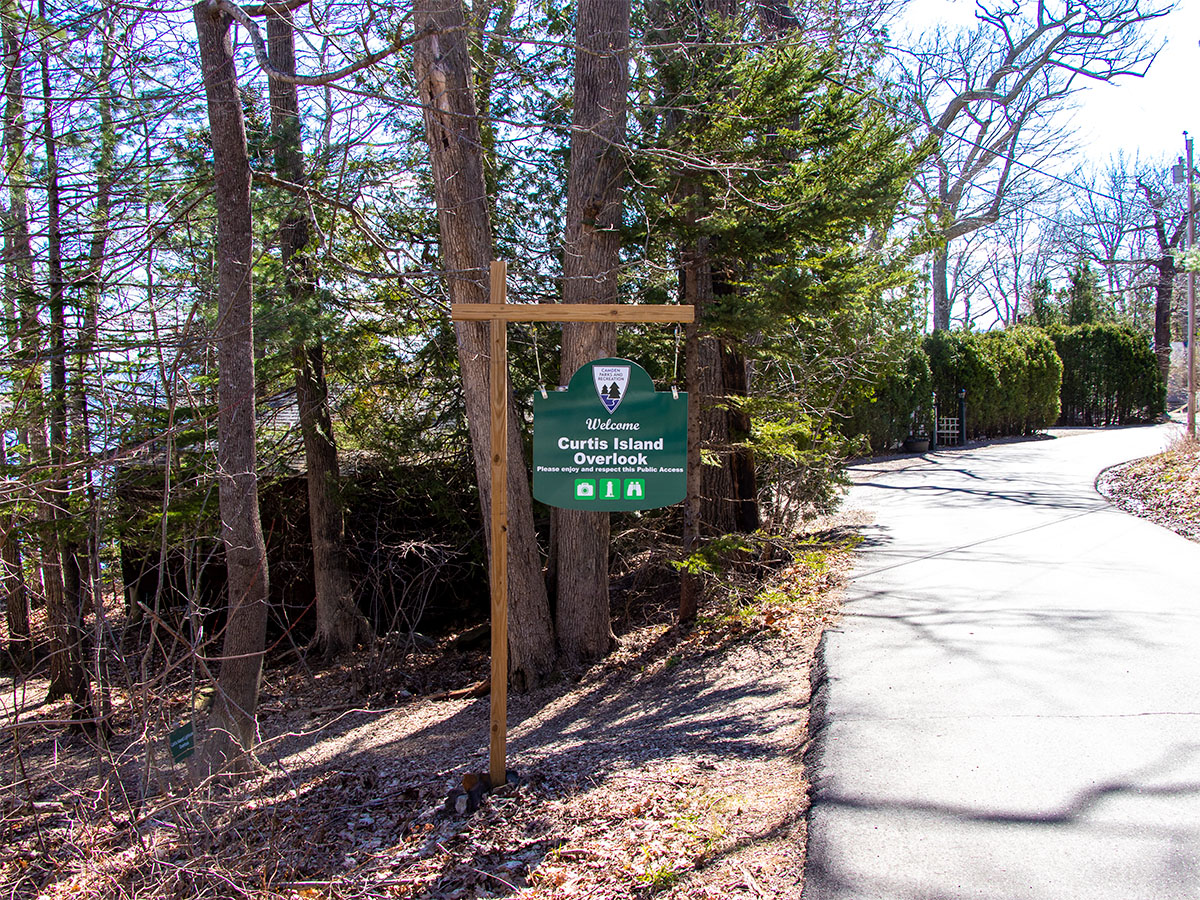

The trail is super short. From start to finish, I think it takes about 30 seconds to traverse, which was nice because I wasn’t terribly in the mood to hike around in anticipation of the views I’ve heard and read so much about. And the day we chose to visit this area was simply perfect. As you’ll see in a moment, the sky was blue and the weather couldn’t have been better. Crisp, clean, and Maine all day long.
Since I was carrying my new phone, I decided to take a quick and very unedited video of my travels. This ought to give you a better idea of the area than I’d ever be able to express through words.
Curtis Island Overlook Trail, Bay View Street, Camden, Maine
As you may have guessed, I took far too many photos of this lighthouse. It’s tough when there’s only one thing in the scene and believe me when I tell you, I felt silly snapping away, one after another, at that one and only thing. Out of respect for your time, I’ll limit my posting to just one picture. It’s probably the best I’ll ever get.
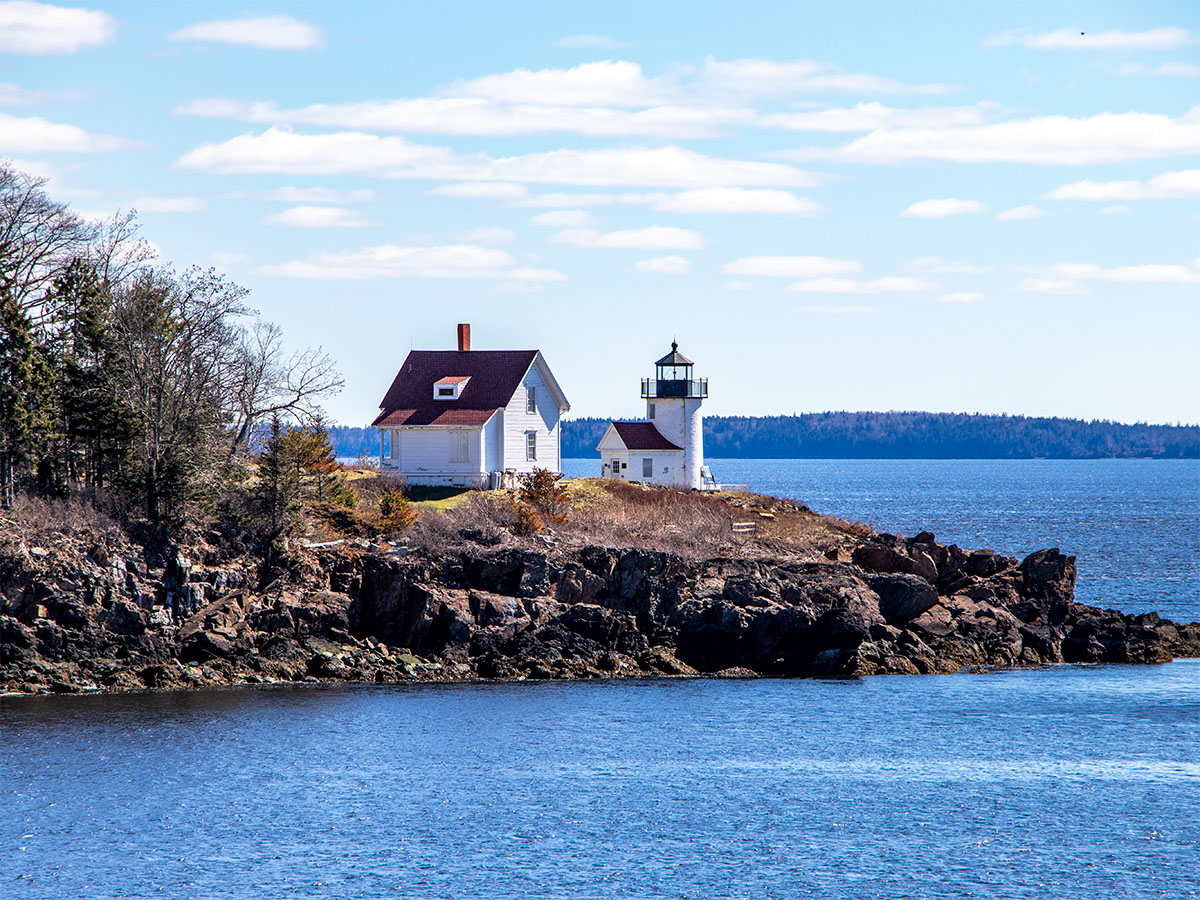
While the lookout area offers a stellar vantage point for we mere mortals, much better views can be found from the water and especially the air. To see what I’m referring to, take a look at this next video produced by Jim Dugan.
Curtis Island Drone Video, Camden, Maine
Talk about lovely footage of quintessential Maine.
History of Curtis Island Light
It really doesn’t matter how small a piece of land is, at just seven acres, Curtis Island offers a rich and lively history. If you’re interested in the full story, you can read it here. Below, I’ll list the highlights.
- Curtis Island was originally called Negro Island. It was named after an African American chef who worked on the boat that carried settler James Richards to Camden in 1769. The chef expressed admiration for the island, hence the name.
- On June 30, 1834, the United States Congress appropriated $4500 for the construction of a lighthouse on the island to be used as a navigational aid.
- John Dorr of Boston sold the property to the federal government for $400 shortly thereafter.
- Contractor George Galt built the original lighthouse, which went into service in 1836.
- In 1889, while Henry Wiley was keeper, a new wood-frame dwelling was built on the original “house” foundation.
- In 1896, a 25-foot tall brick tower replaced the original lighthouse structure.
- In 1934, the name Negro Island was changed to Curtis Island after Cyrus H.K. Curtis, publisher of the Saturday Evening Post and other publications. Mr. Curtis was one of Camden’s most generous benefactors.
- In 1970, the light station was transferred from the United States Coast Guard to the Town of Camden.
- In November 1997, the people of Camden voted to allow the town to assume ownership of Curtis Island Light.
This is a photo of Curtis Island, taken from Eaton Point in Camden. The island was southeast of our position.
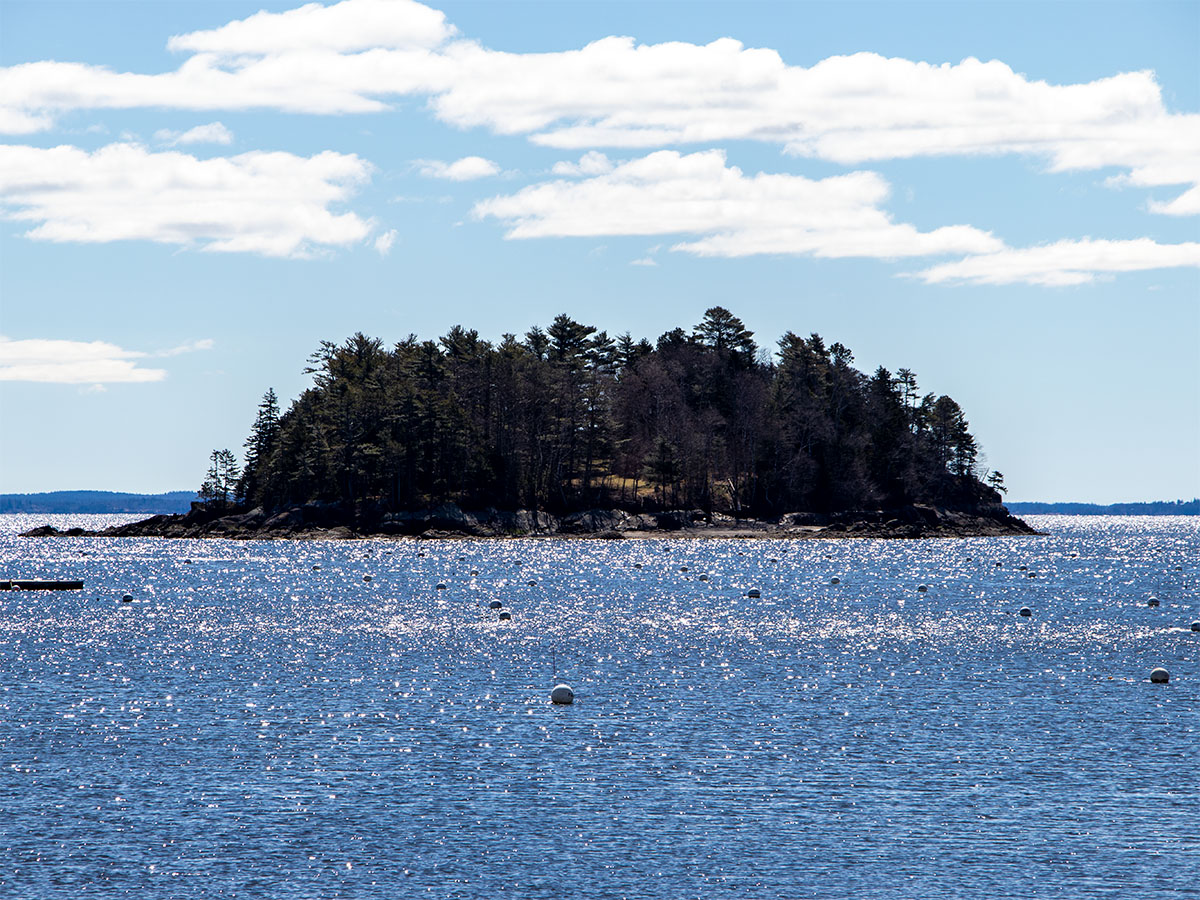
Camden Harbor
After enjoying our time at the overlook, we decided to take a quick trip across the harbor to Lyman-Morse, otherwise known as Camden Marina. It’s a boatbuilding establishment that also offers a few shops as well as a coffeehouse. The vantage point from the marina is like none other and with the weather we had, it would be silly not to stop by for some photos.
First, I grabbed a picture of some boat launch tracks with Curtis Island in the background.
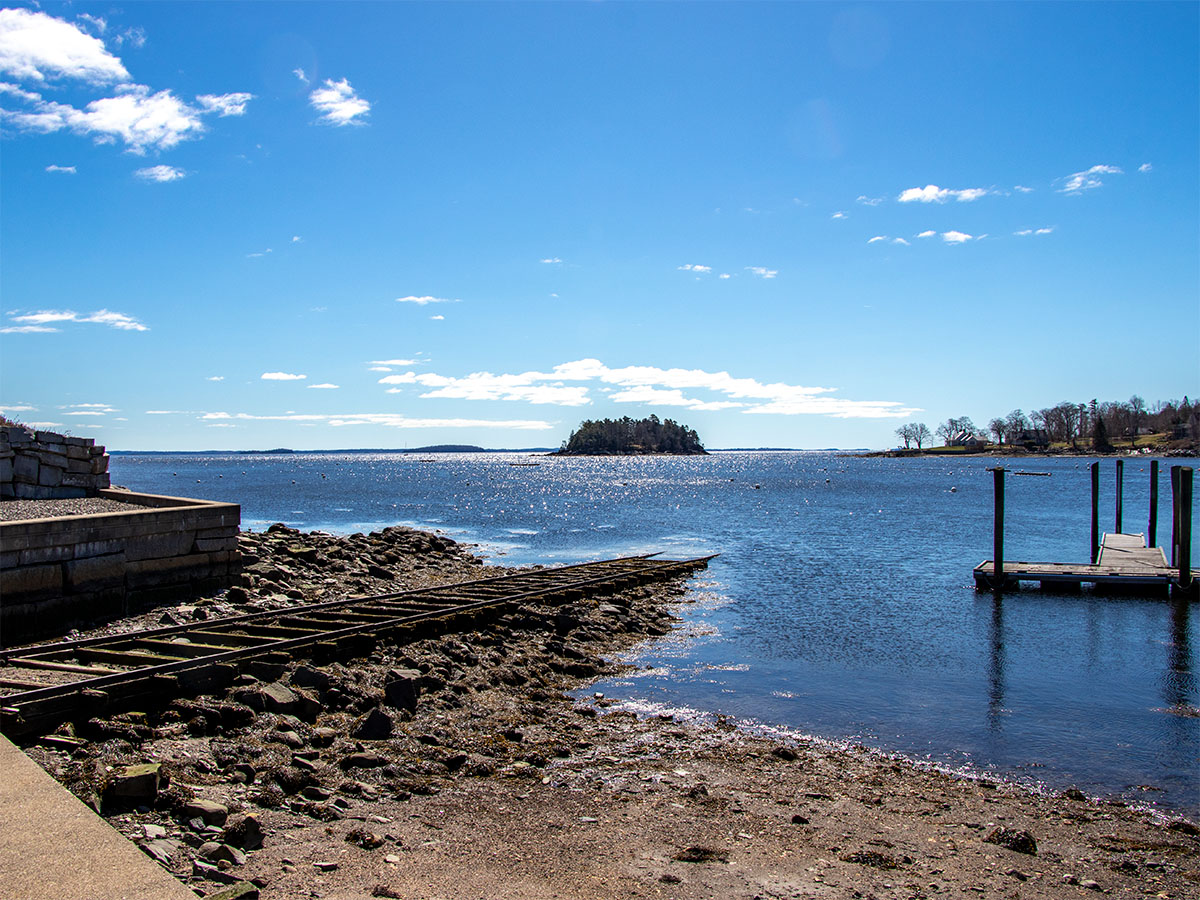
And then I took a photo of Camden’s waterfront. It really doesn’t get much better than this.
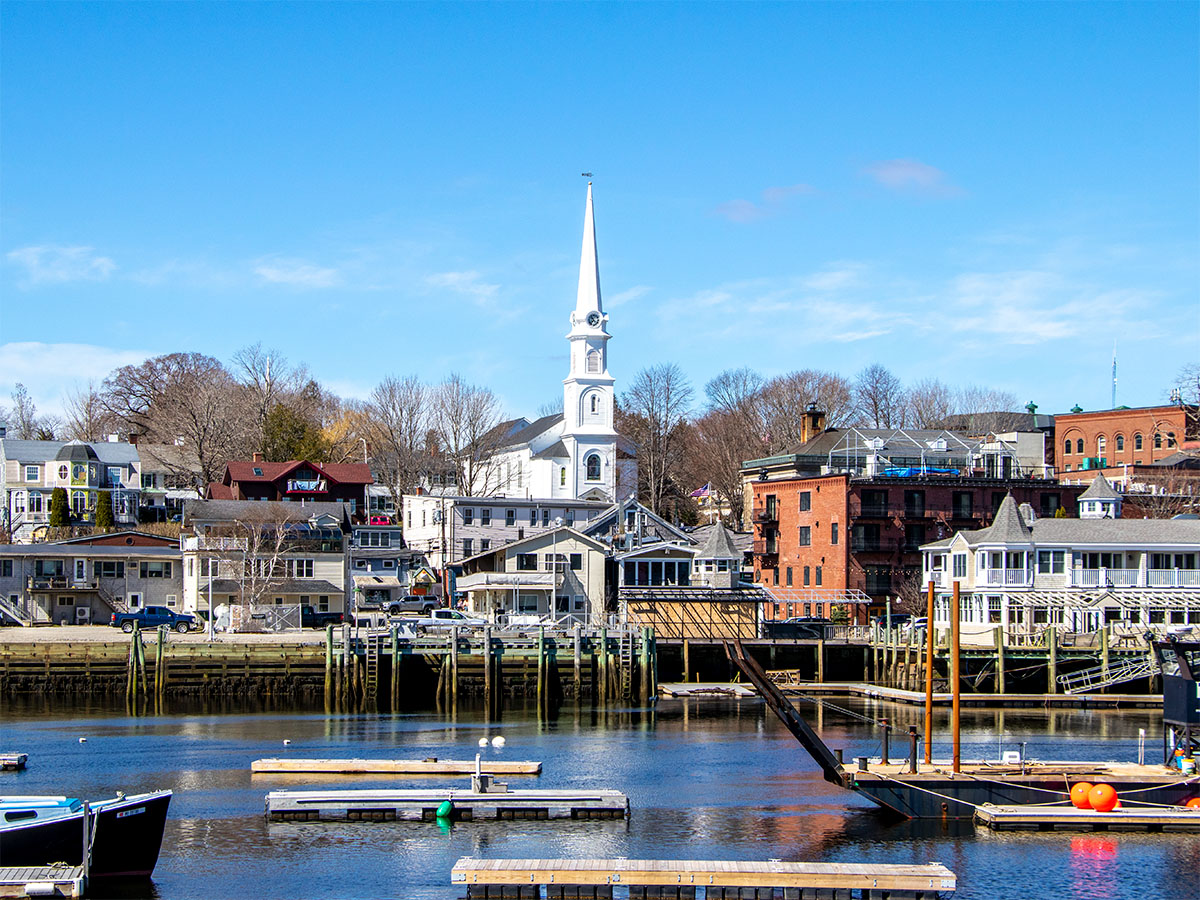
I also managed to take photos of two sailboats I easily pictured myself sitting in. These boats were practically begging me to take them for a ride. But of course, since I have yet to learn to sail, I’d need a skipper.
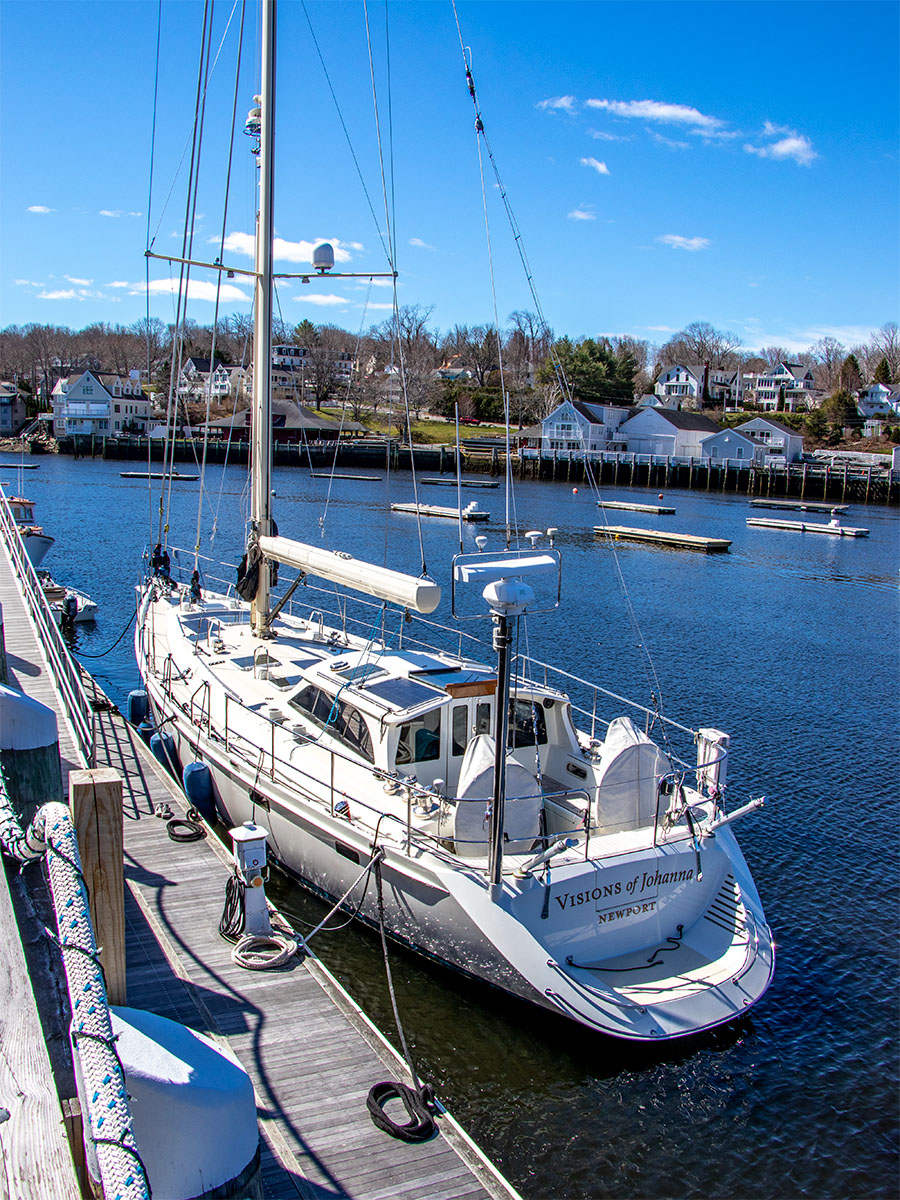
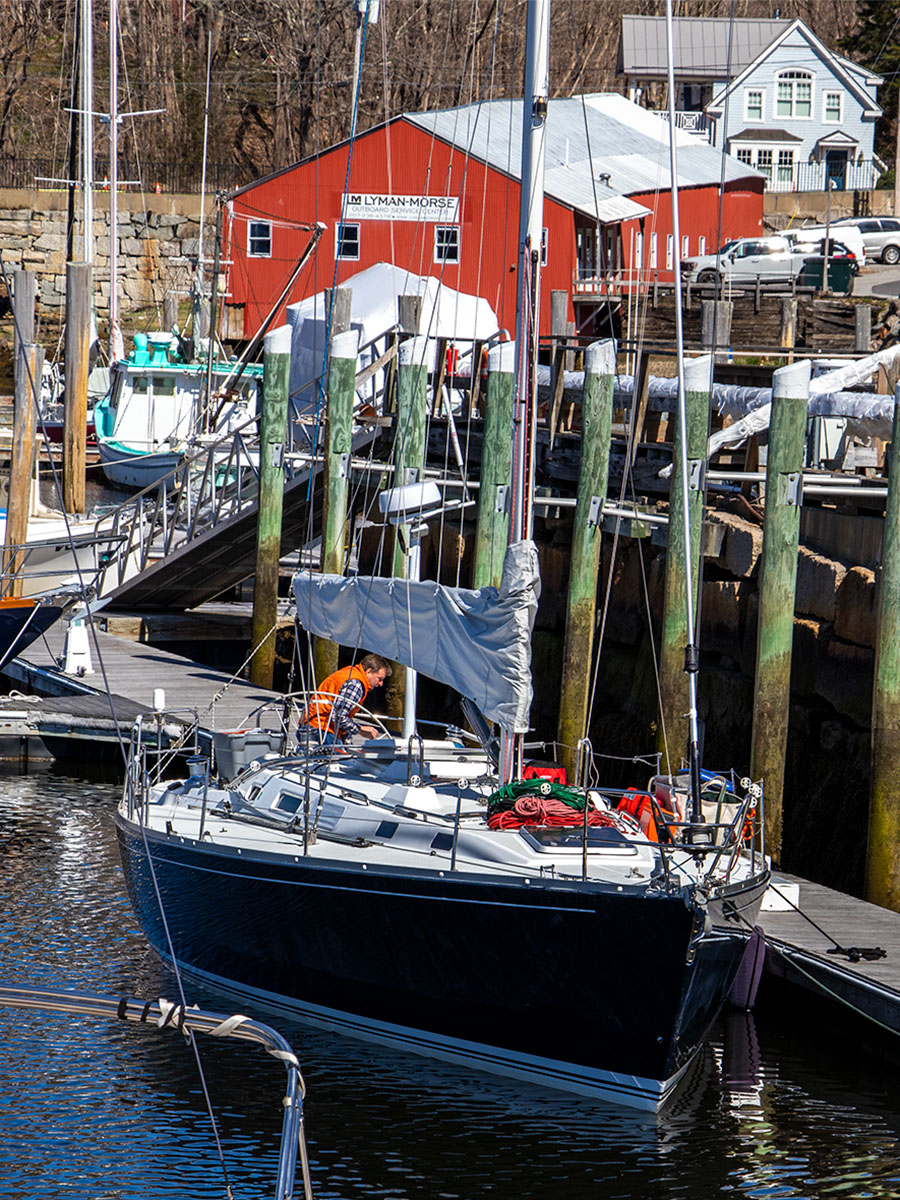
And just for fun, I took another video to memorialize our visit. It’s just a quick stroll along the boardwalk. Thinking back, we should have simply stayed in Camden for the day. Nothing compared to this.
Waterfront Walk at Camden Harbor, Maine
Lincolnville, Maine
Lincolnville is a mere 5.8 miles north of Camden on Rt.1. The trip from one town to the next takes the entirety of eight minutes. Along the way though, a traveler is able to glimpse a very nice collection of inns, bed and breakfasts, and the loveliest of homes. If white clapboard is your thing, from Camden to Lincolnville along Rt.1 is your place.
What’s Lincolnville’s claim to fame? While being tiny in size along the coast, the area offers a few attractions visitors might enjoy, namely The Sprouter Inn Bed & Breakfast, Lincolnville Beach, two lobster shacks, and most of all, the Lincolnville Ferry. The last offers multi-day 15 minute trips between Lincolnville and an island called Islesboro. People tell me Islesboro is a must-do-and-see vacation spot and that a car will be necessary. Luckily, the ferry is of the drive-on, drive-off variety. It’s not a small island at over 12 miles long, but from what I gather, it’s quite picturesque and worth the time and effort for a visit. Will we ever go there? I’m not sure. The idea is bouncing around my mind. I’ll tell you though, after watching a view videos, I’m inching closer to making it happen.
Drone Cinematography: Islesboro, Maine
But really, this isn’t about Islesboro, it’s about Lincolnville. Although our visit didn’t last long or consist of more than having a nice chat with a woman near the ferry and then a walk along the beach, I did manage to take a few photos.
This is the Lincolnville/Islesboro Ferry.
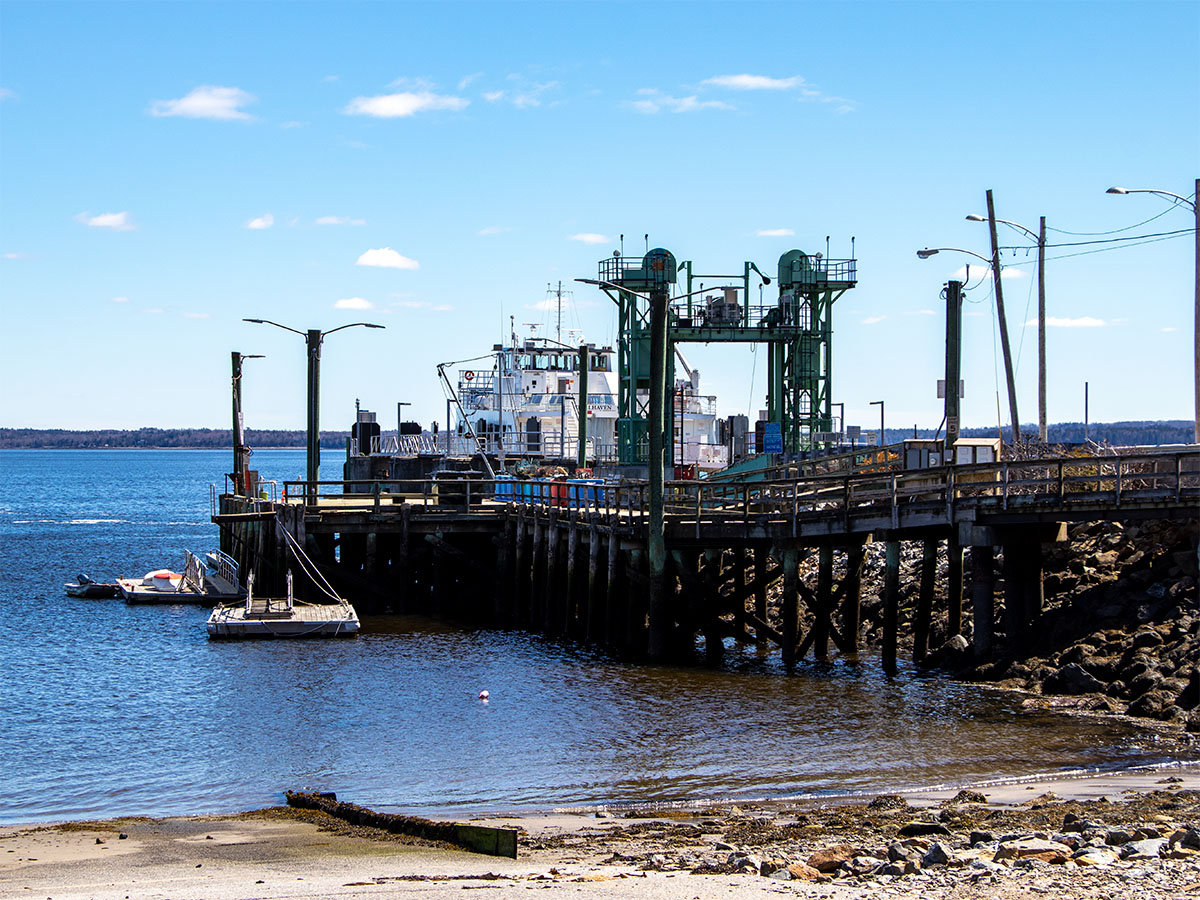

This is the beach. It’s not fluffy white or black sand, but it’s fun for walking.

These are two random shots I got of a herring gull as well as a few boats in the bay near Islesboro.
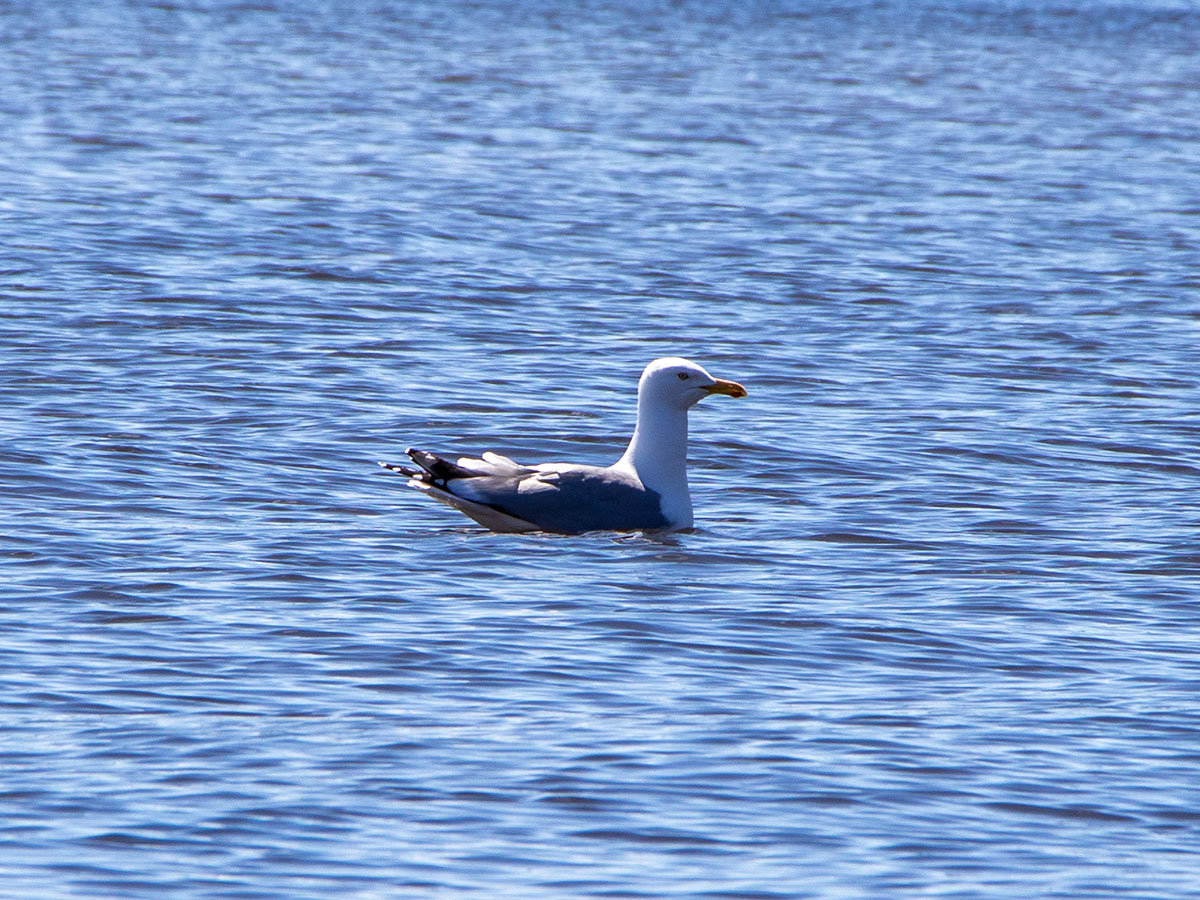

I’ll leave you with this one last Lincolnville picture. It’s a bit odd. It’s a nude mermaid statue sitting in a rowboat. Enjoy.
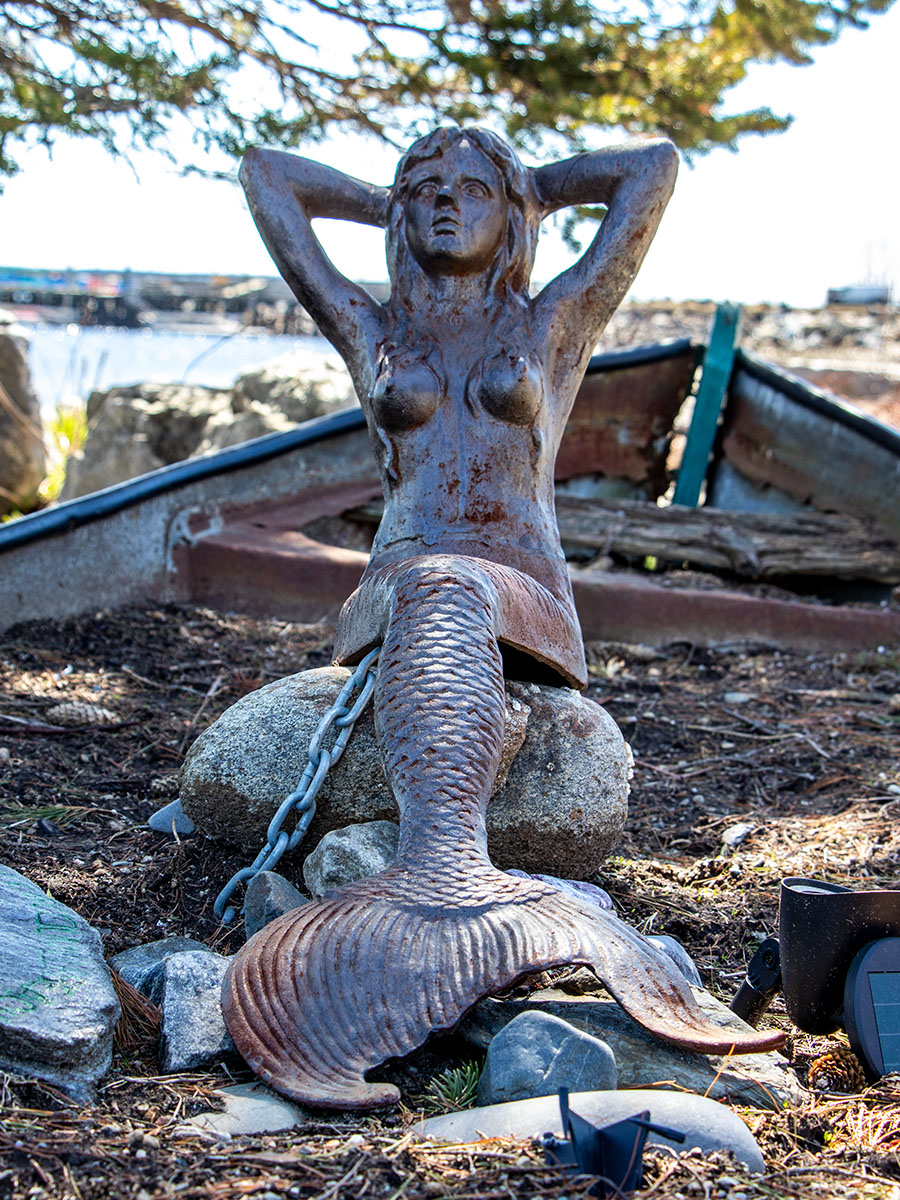
Belfast, Maine
Our final destination for the day was Belfast. From Lincolnville, the town is a mere 12.2 miles or 16 minutes away. And since it was so close by and since we’d never been there, we thought a visit was in order. It’s nice to check places off the list – we’ve got a long one and I hope to eventually see them all.
Belfast isn’t large at all. Its population stands at around 6,938 people and it’s located at the mouth of the Passagassawakeag River estuary on Belfast Bay and Penobscot Bay. It’s actually an excellent launching point if you’re into boating. The bay is full of islands that host all sorts of birds and wildlife. As a matter of fact, if you were to take a boat ride around an island or two, chances are you’d see a few seals sunning themselves on the rocks. Oh wait, you’re a lover of wildlife? The West Penobscot Bay plays host to many other animals as well. Check out this list: eagles, cormorants, osprey, are herons are often seen fishing from islands and shores. Black ducks, harlequin ducks, eiders, goldeneyes, scaups, mergansers, buffleheads, seagulls, sandpipers, and many other birds visit the bay as well. The outer islands also host colonies of puffins and razorbills. Sound good? That’s because it is. The area’s like a huge playground for humans and animals alike.
Laura and I walked the entirety of the town and took quite a few photos of the more interesting attractions. This first photo is of the Consumers Fuel Co building located at 12 Main Street. It’s been there for over 100 years and is assuredly a staple amongst the community. Tourists like taking photos of it, I’m sure.
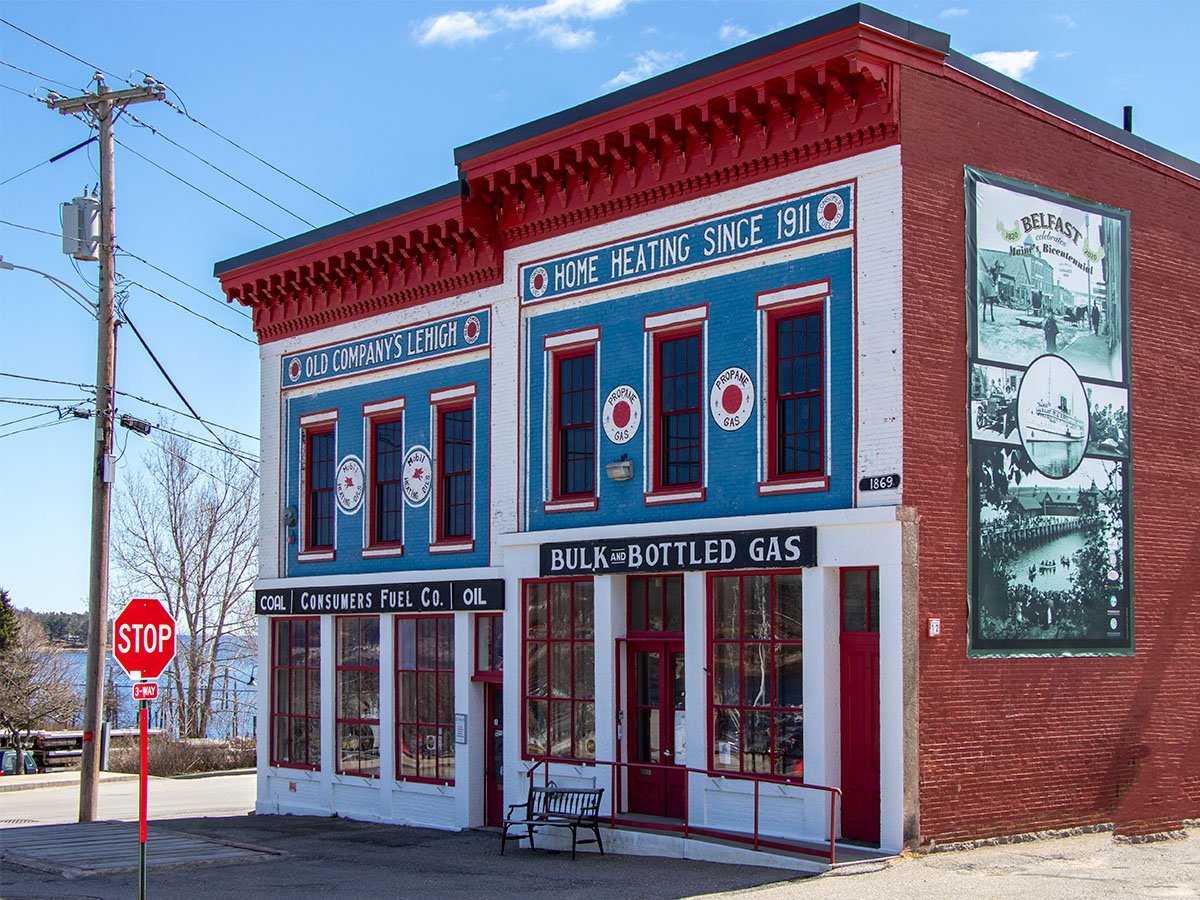
This is The Purple Baboon Gift Shop located on Front Street. It’s chock full of everything you’d expect to see in a gift shop on the Maine waterfront.
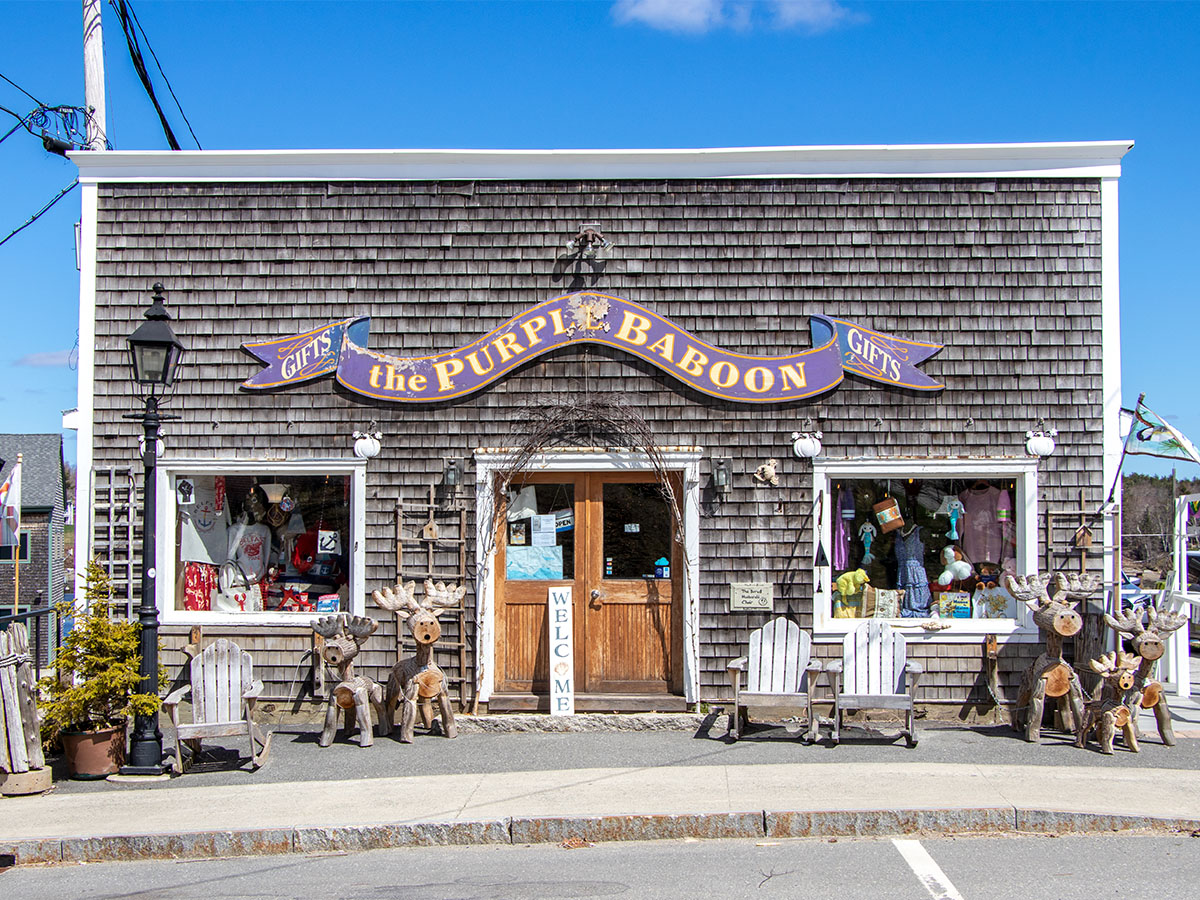
And this is Rollie’s Bar and Grill located on Main Street. It’s definitely another staple. Extraordinarily popular with the locals and tourists alike.
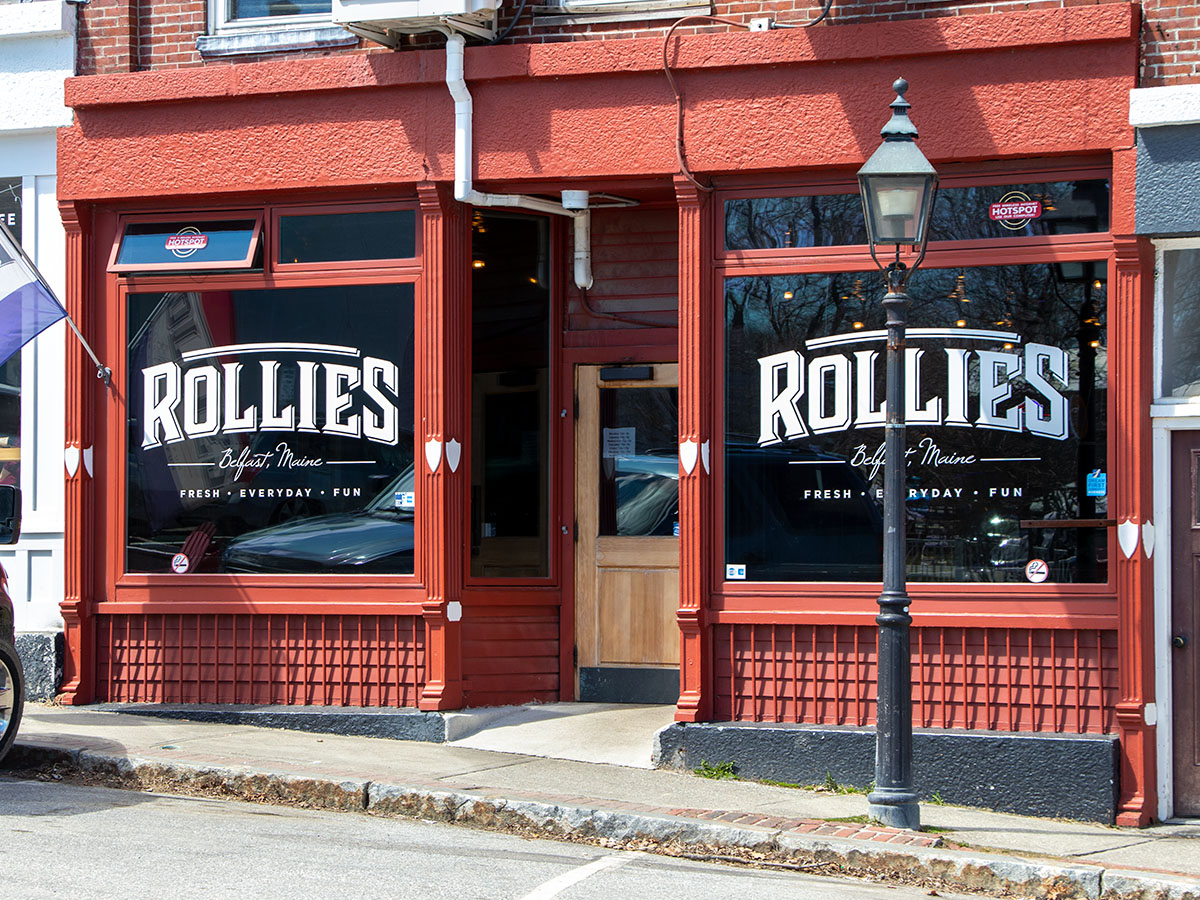
This is a cool shot of Main Street from the waterfront. Most of the action is right up this road.
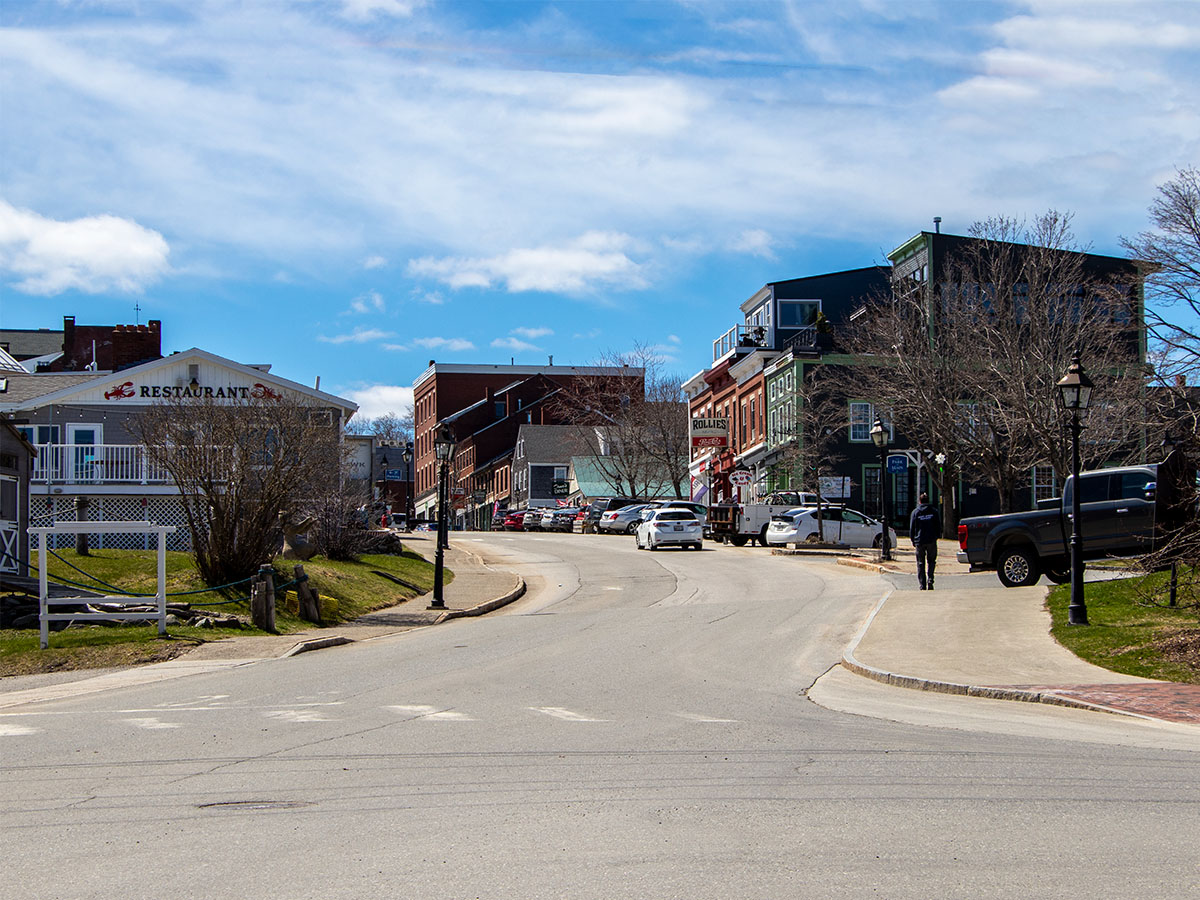
I love my olive oil, so when we walked by a store that specializes in it, we had to stop in. Lucky we did because I walked right into olive oil heaven. Dozens of types and styles, all for the taking. Samples were encouraged and I did what I could in that regard. I’ve never seen so much olive oil.
The name of the store is Vinolio Specialty Foods.
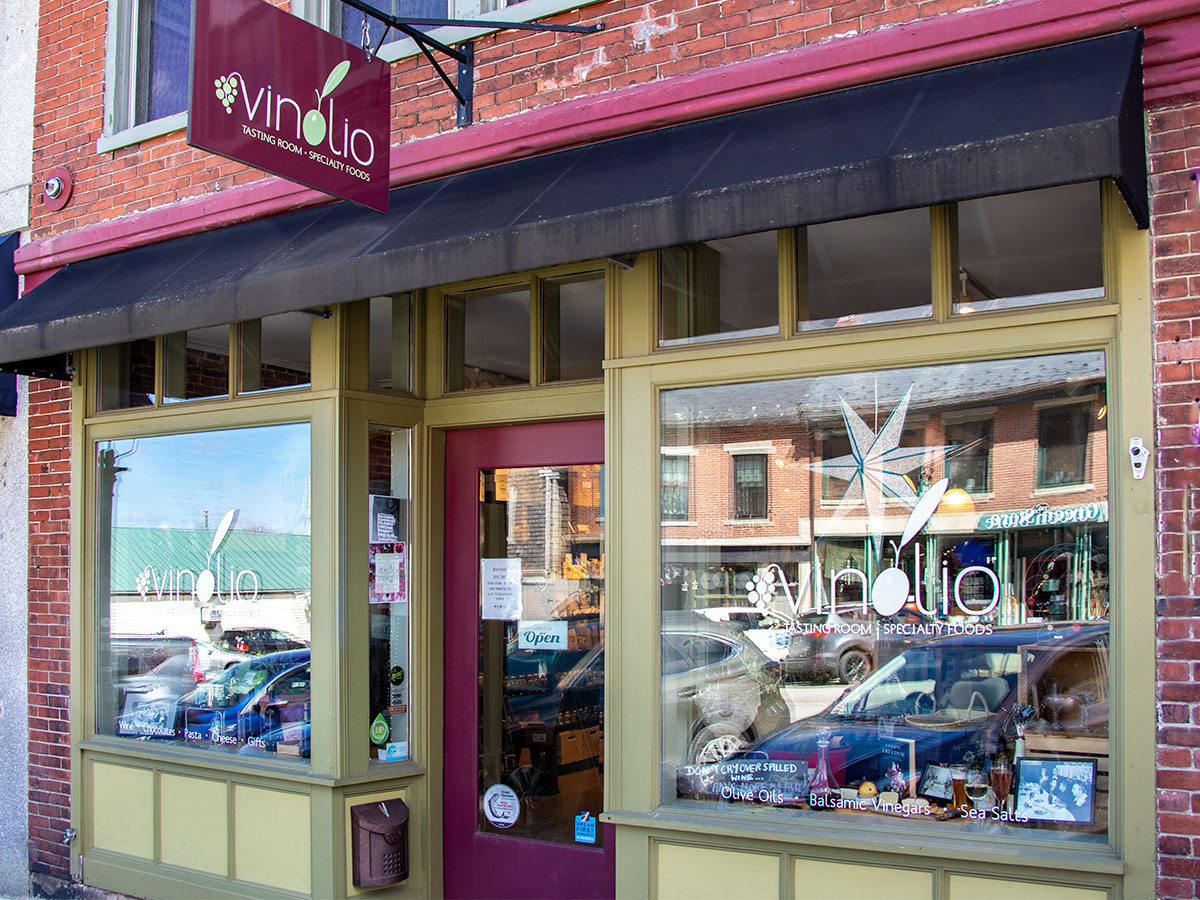
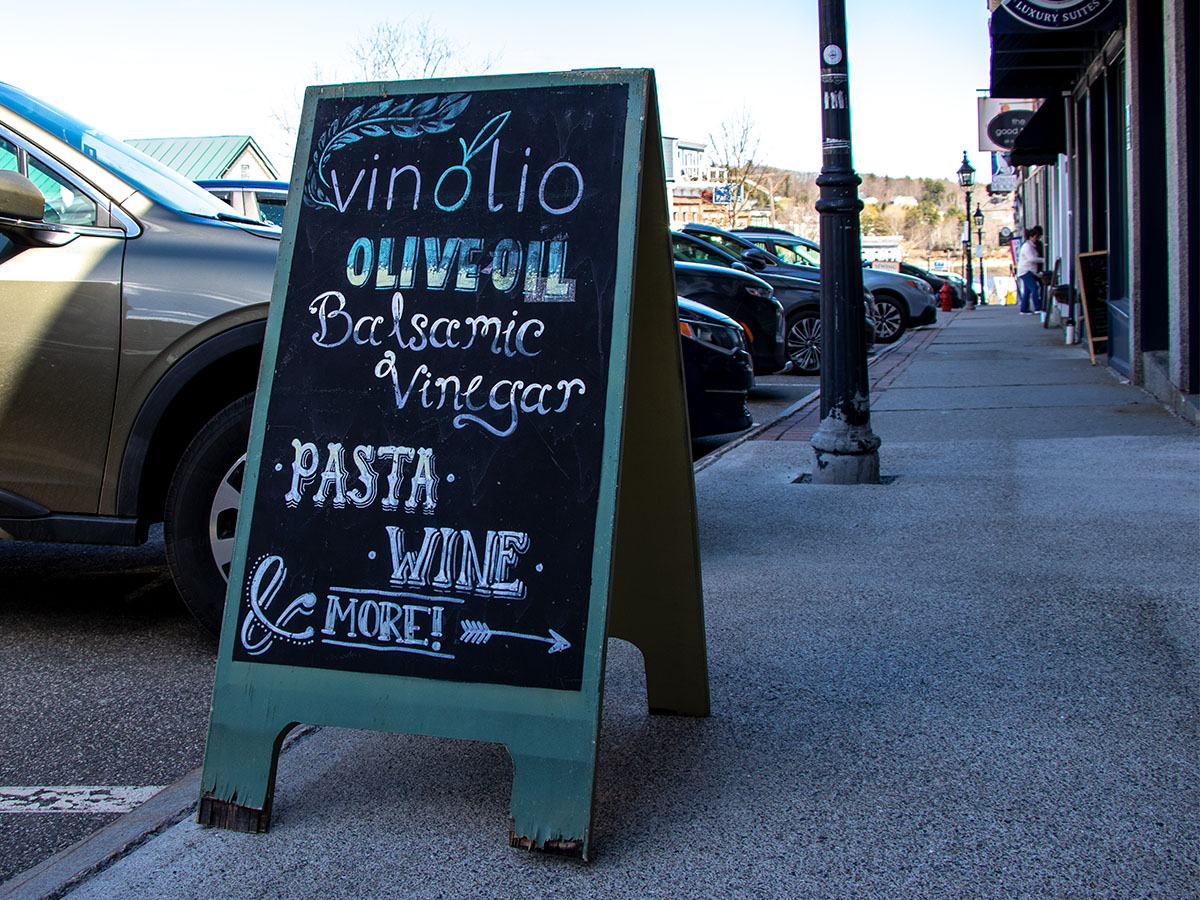
Take a look at all the olive oil. This is probably half of it.
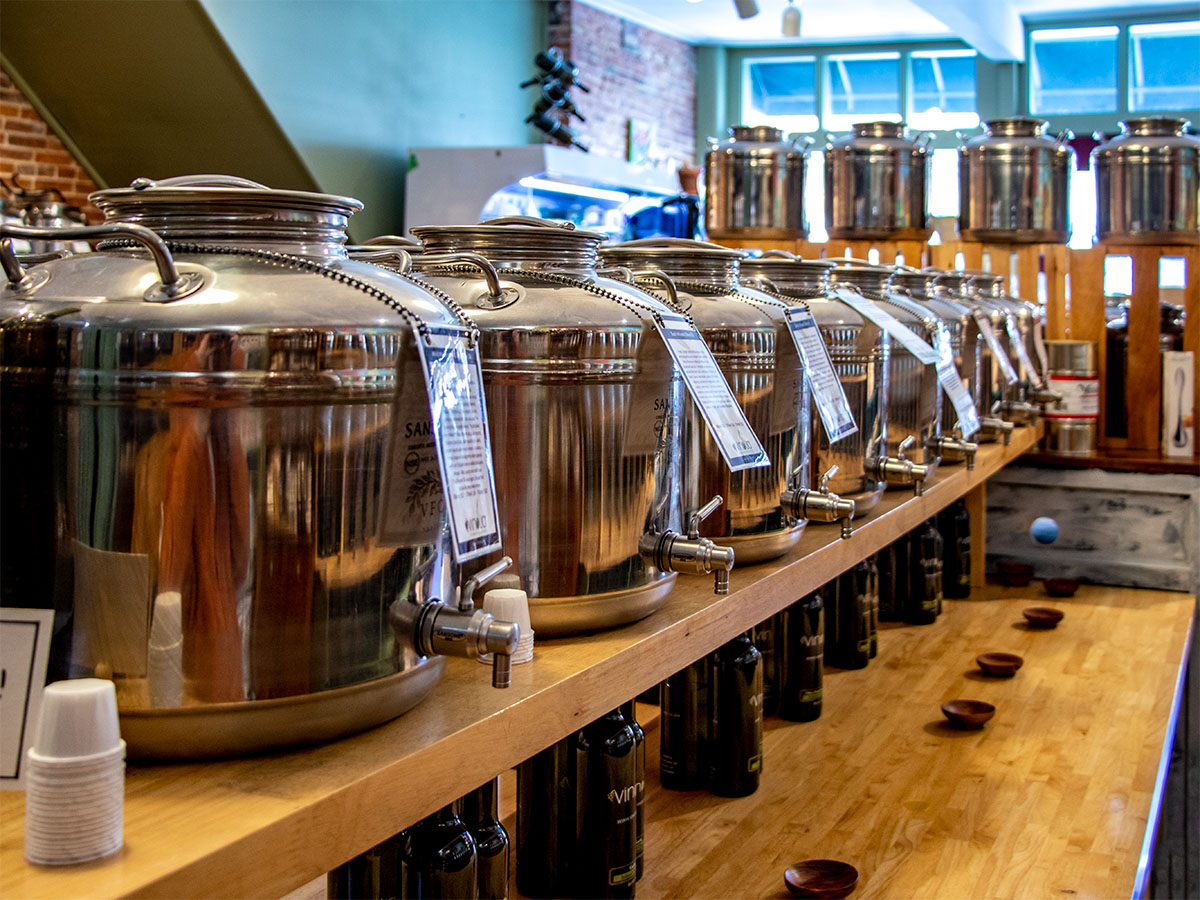

I think this olive oil store was the highlight of our visit to Belfast. At least for me, it was. I enjoy specialty items like this and the woman who owns the store was a lot of fun. We bought a small bottle of oil. I’m not usually one for getting sucked into something like this, but after sampling so many flavors and varieties, I fell in love with one. It’s delicious on our nightly salads.
This brings me to the end of another post. I sincerely hope you enjoyed it and, if so, I invite you to leave a comment down below to let me know your thoughts. It’s always nice to get feedback on the things I share.
Below are a few questions I’d like to ask you:
- Would you like to receive these posts via email? If so, you can sign up here. I send out new posts on Monday mornings, bright and early.
- Are you new here? Are you interested in reading through my entire list of posts that go way back? If so, you can start right here.
If you did any of these things, I can tell you right now that you’d truly make my day. Thank you so much and with that, I say adieu. Or at least, until next time.
PS – Can you do me a huge favor? Can you please share this page with someone you think might enjoy it? Here are some links to help you do that. Thank you!

[…] take a look at this post I wrote about the Curtis Island Lighthouse in Camden, Maine. I visited this lighthouse during the autumn and took pictures of it. Then I wrote about it. […]